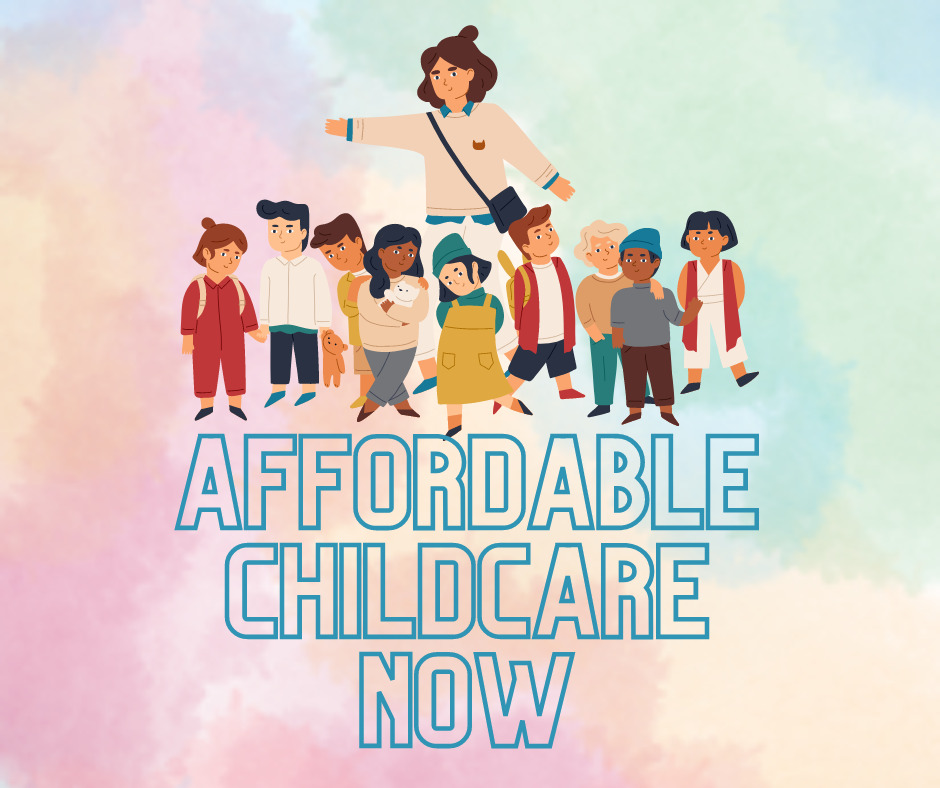DDA has provided childcare since the 1970s and participated in discussions with the early pioneers of affordable, safe, regulated childcare in Vancouver for longer than that. It’s hard to believe now, but childcare was generally unavailable in the 1960s and 1970s because women were expected to stay home – many were terminated from their jobs once they showed the least sign of pregnancy. Some men “let” their wives work for “pin money” but in no way were they encouraged to have a career past nurse or teacher. After women entered the workforce in larger numbers after the feminist revolution, many became the sole breadwinners of their families. Those who could not work due to child-minding responsibilities lived in poverty along with their children.
I was a single mother from the time my kids were aged 6 and 11, but paying for childcare was a burden from the time they were born. Once he lost custody, their father dropped out of their lives – no help with care or child support. Childcare was spotty and expensive and after-school care was non-existent. My life was split between work and kids 24/7. Families and single Moms who had kids with disabilities fared even worse since there was very little special needs childcare and inclusive childcare did not yet exist.
Thankfully, the advocates at dedicated childcare organizations continued to demand accessible, affordable, regulated childcare as a reaction to privatized childcare fees that were higher than university tuition costs. Families just starting out and single mothers, particularly in a place like Vancouver, generally have the least amount of disposable income and the most amount of debt, so these costs were excessive. Because of these women – yes, these advocates were (are) virtually all women – fees are being reduced by 50% for regulated childcare by the end of 2022 and to $10 per day by March 2026.
This is an unbelievable victory for all women of childbearing age that is unique among nations other than in Scandinavia, where countries also have high happiness ratings. The price tag for all this is over $17 billion and for the first time, DDA is receiving larger cheques from the government so we can reduce childcare fees paid by families and single Moms. Since the childcare plan was introduced to get women back into the workforce after having a child so they can claim some of the jobs left vacant by retiring Baby Boomers, there will be a positive economic impact for large and small businesses but the biggest benefit will be in the lives of children who will be learning during their most critical years of mental and physical development. Their improved social, communication and basic academic skills will form a foundation of success from K-12 and beyond. Learning disabilities, autism, and other developmental issues will also be identified earlier and early intervention services will be started earlier when the benefits are greatest. Ultimately, today’s reduced childcare fees will produce a more vibrant, educated, well-adjusted population of young people who will be able to enjoy more opportunities and better contribute to Canada’s future.
As of 2022, women in Canada make 90 cents for every $1 men make, which is a huge improvement over days gone by but not full parity. Now that young women can access reliable, affordable child care, they can avoid the career gaps due to childbirth that have reduced women’s income for far too long. Now that governments are investing in care, the value of traditional “women’s work” will also increase, offering DDA staff higher wages. Now that women can more easily stay in the workforce, they will be more likely to receive promotions into leadership roles and make the big decisions that will drive Canada into a prosperous future.
This all goes to show that governments can do great things for their citizens and that perseverance in advocacy does work – although results may take generations to achieve.



